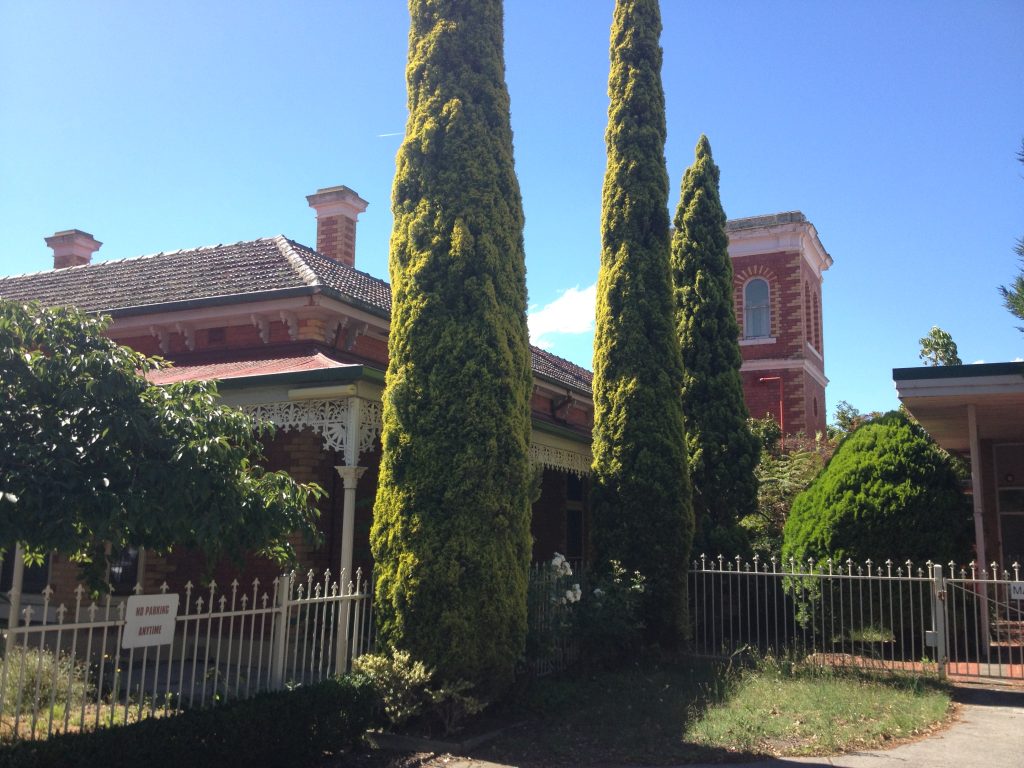Frogmore: soon to be no more

Last night, six of the City of Glen Eira’s nine councillors were present to vote on a motion to abandon Planning Scheme Amendment C137, which proposed a heritage overlay for “Frogmore”, one of the last remaining Victorian villas in the Carnegie and Murrumbeena area. By the slimmest of margins, the motion succeeded. The vote was split down the middle, with Cr Neil Pilling’s casting vote the decider, and paves the way for demolition. On another night, the result may have been different, with Mayor Jim Magee (previously a Frogmore supporter) on leave, and two councillors excused from the vote due to conflicts of interest. The disappointment of community members who packed the public gallery for the meeting was palpable.
It was also by the slimmest of margins that “Frogmore” missed out on an individual heritage overlay when the City implemented the findings of the 1996 City of Glen Eira Heritage Management Plan, which found the property at 1 Wahgoo Road to have a “C” grading. This denoted local significance, but “C” graded properties would only be recommended for an individual heritage overlay if located within an “identified historic area”. Frogmore was not located in an identified historic area, owing to the fact that it predates the urban subdivision surrounding it. Ironically, this contributes to the significance of the c1889 house, a rare former farm house surrounded by later suburban development. It was also seen to be compromised due to surrounding inappropriate development and its position set back and obscured from Wahgoo Road.
Nearly one thousand Glen Eira residents, supported by the National Trust, felt differently, according to a petition tabled at a Council meeting in December 2014 requesting Council to consider the historic importance of Frogmore, due to a threat posed by the sale of the property by Betheden Aged Care to Jewish Care Victoria, contingent on planning approval for a new aged care development. To their credit, Council proceeded with an independent heritage assessment of the property, which found the site to be “significant to the City of Glen Eira, historically and aesthetically”. The report made a further recommendation to include the site in the schedule to the heritage overlay of the planning scheme.
Council then voted to proceed with the preparation of Amendment C137. When advertised, the amendment attracted 303 submissions in support (including one by the National Trust), and just 2 in opposition. Council then proceeded to last night’s vote to determine whether to continue with the amendment and request the Minister for Planning to appoint an independent Planning Panel.
Adding another layer of complexity to the process was a parallel application to Heritage Victoria by residents who believed house to be an 1850s example of the architect Joseph Reed, with definitive evidence showing that at one time there was a Joseph Reed designed house on this property. Heritage Victoria’s detailed assessment however concluded that the house was a later design by noted architect Sydney W. Smith, and that it did not reach the threshold for state significance.
Worryingly, Heritage Victoria’s conclusion was used by some councillors to justify the abandonment of protection at a local level, incorrectly conflating local and state significance and blurring the distinction between the two. Councillors also argued that the site had been “compromised” by previous development, and was no longer in its “pristine” state. Once again, these arguments were not supported by the independent heritage assessment by Graeme Butler & Associates.
Ultimately, the decision came down to the issue of “net community benefit”. At a planning conference in May, representatives of the proposed developer stated that the aged care redevelopment would not be viable if Frogmore had to be retained, and that any delay in the development process would have an adverse impact on the not-for-profit organisations involved. The community argued that retaining Frogmore would be of greater benefit in the long run. Unfortunately for the community, Council voted to abandon the process which would have seen these arguments teased out and augmented by expert evidence before an independent Planning Panel.
Notably, the Officer’s Report presented to Council prior to last night’s meeting, which presumably informed their decision along with lobbying by parties on both sides, contained no analysis of net community benefit. The decision therefore remains opaque, and hundreds of residents, along with the National Trust, are left asking why.



This issue was covered in today’s Age: http://www.theage.com.au/victoria/residents-fail-in-attempt-to-preserve-historic-frogmore-house-from-demolition-20150610-ghkyz7.html